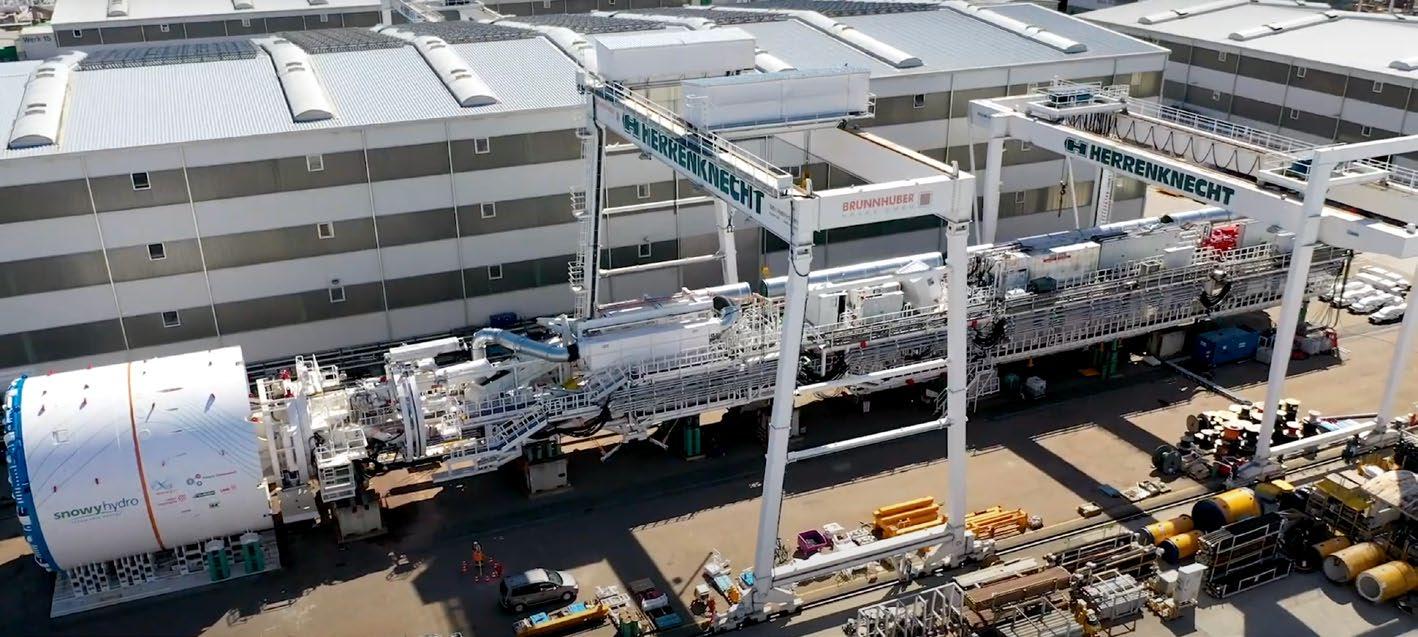
2 minute read
TUNNEL BORING MACHINES
On the original Scheme, tunnelling was achieved through drill and blast and, in some cases, picks and shovels. During construction of Snowy 2.0 the bulk of the underground excavation will be carried out by large tunnel boring machines, or TBMs. As part of Snowy 2.0, there will be approximately 40km of tunnels dug, with the bulk of the excavation via the use of three TBMs.
Each TBM has been specifically designed to manage the various ground conditions they will encounter throughout construction. Some of the key drivers in the TBM designs have included the geology of the rock, the diameter of the tunnels and the alignment and angle of the tunnel (e.g. the ability to operate at steeper angles for the inclined pressure shaft).
Advertisement
205m
TBM 1
TBM 1 will excavate the emergency, ventilation and cable tunnel from the surface in Lobs Hole down to the power station complex. From there, it will tunnel the inclined pressure shaft, linking the headrace tunnel (the upper waterway tunnel) to the large turbines within the power station.
Constructed in Germany by Herrenknecht AG, TBM 1 is a single shield, open mode machine designed to deal with hard rock conditions. It is a very complex machine - it can operate downhill and then be converted to excavate uphill. At 205m in length (that’s the equivalent of two rugby league fields), it will be one of the longest TBMs in operation around the globe. TBM 1 will have a diameter of around 11m (the same as a three-storey building) and will be able to excavate up to 30m of rock per day. TBM 1 is
expected to start tunnelling early in 2021.
TBM 2
TBM 2 will excavate the main access tunnel from the surface at Lobs Hole down to the power station complex. From there, TBM 2 will be dismantled underground and reassembled at the Talbingo portal. Once assembled, the TBM will be shifted on a concrete cradle along the 700m-long Talbingo construction adit before being relaunched underground to excavate the tailrace tunnel. Constructed in China by CREG, TBM 2 is also a single shield, open mode machine designed to deal with hard rock conditions and is 137m long. TBM 2 is the first TBM to be launched on the project and is the only machine that will excavate two separate tunnels. TBM 2 has a diameter of around 11m and will be able to excavate up to 30m of rock per day. TBM 2, pictured below being unloaded at Port Kembla, is expected to start tunnelling in late 2020.
TBM 3
Also constructed in Germany by Herrenknecht AG, TBM 3 is 142m long, with a 11m diameter and will excavate 16km of the headrace tunnel. TBM 3 can operate in ‘slurry mode’ when required, mixing bentonite and water into the fine excavated rock, forming a ‘slurry’ that can be pumped back to the surface for treatment.
This will ensure that rock dust doesn’t become airborne, keeping our workers safe! TBM 3 is expected to tunnel around 30m of rock per day, however, if rock conditions are favourable, we may see this increase to 50m per day. TBM 3 is expected to start tunnelling in the second half of 2021.









